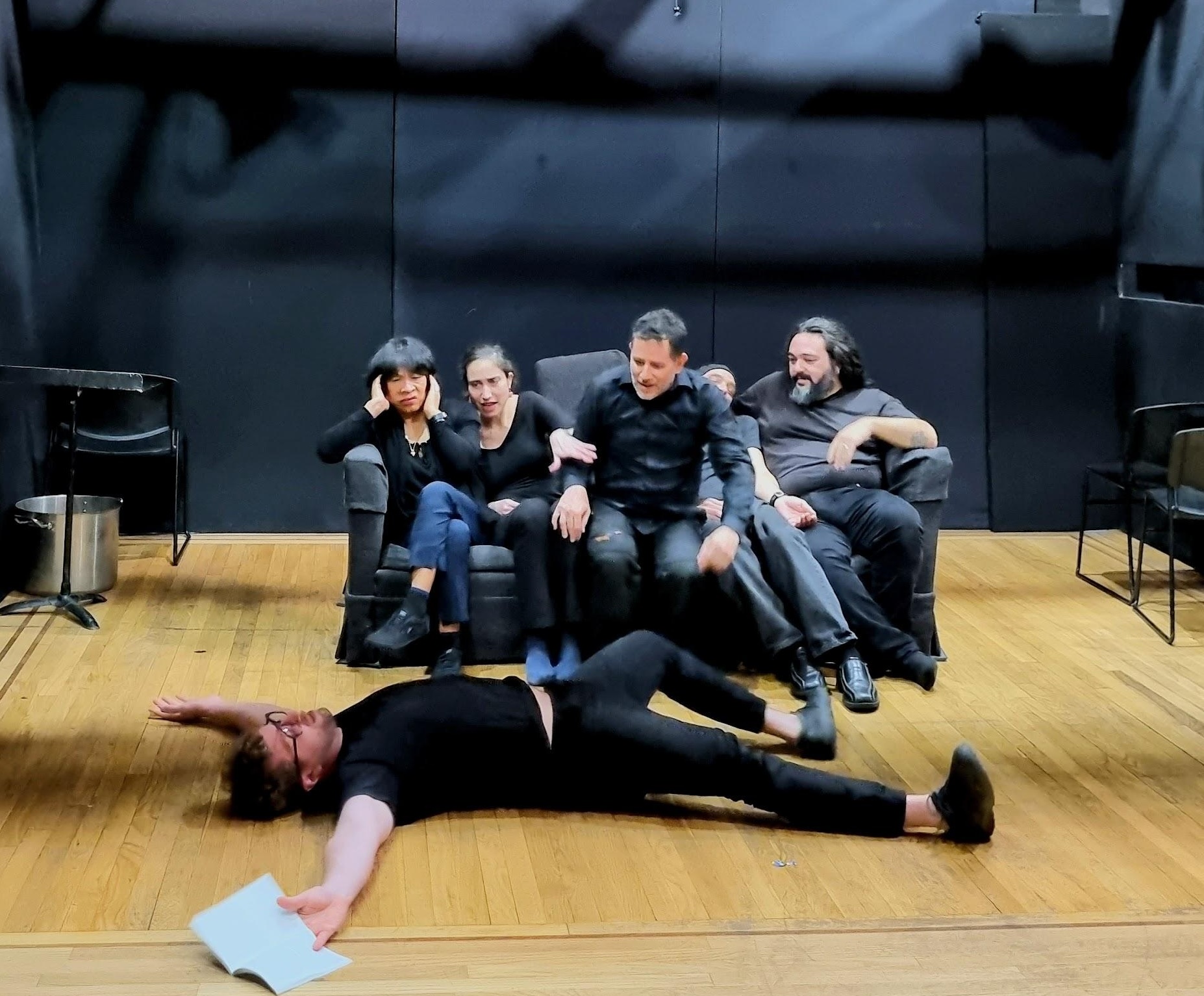Para leer una versión en español, vaya aquí.
In the South Bronx, the iD Studio theater teaches collective creation workshops to support the artistic expression of the Latinx community in New York.
Latin American migrants are bringing their own personal stories and experiences to the stage at the iD Studio Theater in Mott Haven through song, dance, and acting.
“El Borde del Espejo” is a 14-scene play in Spanish that got an early debut in late December at the bilingual theater on East 140th Street. Three performances followed 18 months of workshops where migrant participants were encouraged to express themselves however they chose.
“These spaces are essential for Latino communities to be given a voice,” said cast member Maria Elena Adorno. In the performance, professional actors share the stage with enthusiastic amateurs.
The collective creation workshops are part of the Bilingual Healing Arts Initiative. Executive Director Sandie Luna, a Dominican, sees them as providing a fabric of care for communities and wants to ensure that the arts are recognized and accessible in the Latinx community.
“We seek to honor the incredible knowledge and wisdom of the migrant community that they bring, thanks to the experiences they have had,” Luna said. “The moment they walk through the doors, we want them to know that they have a community here, where they are welcome and valued.”
A study by the National Arts Research Center found that in New York, 66% of those active in arts organizations are white residents, while only 11% identify as Hispanic. Also, the service staff is predominantly people of color, while the boards of directors and executive leadership are 68% white (non-Hispanic).
The iD Studio gets people involved through their social media accounts on Instagram and Facebook as well as in the streets. Luna and other theater volunteers have been known to walk the Mott Haven streets announcing their next show, play, or workshop, inviting anyone to join.

When the curtain opens starting “El Borde del Espejo,” the cast is standing on stage, looking towards the horizon at a distant light that could come from their native lands in Colombia, Cuba, Guatemala, Mexico, Puerto Rico or Venezuela. Each one tells a short story about where they come from and why they emigrated to the United States. Then, the play begins.
The scenes, all unrelated and all adapted from real-life stories, touch different themes, from crossing the Mexico-U.S. border, to domestic violence, gentrification, and shifting gender roles.
There is no specific narrative line throughout the play. What binds the scenes together is the fact they were first shared in collective creation. The participants themselves incorporated acting, dialogue, and movement into the story of one person. The Colombian director Carlos Satizábal, then guided and facilitated the process without imposing a traditional theater dynamic.
Longtime Bronx residents Adorno and Susana Bruno are the only members of the cast who have been on board since the workshops began in 2021.
Bruno, a Holistic Reiki instructor, is from Mexico and has been living in the Bronx for 21 years. She started the workshops being very shy, but with time, she became confident on stage.
“Doing theater [in collective creation] is healing, it is not because you come there [iD Studio] and they give you therapy, no, but because in this work, by telling and creating something that has happened to you, you express it and get rid of that painful moment that you are living or have lived,” she reflected.
Bruno hopes to become a professional actress in the not-so-distant future.
“I heard a girl said once ‘what are dreams for if at the end of the day they stay there?’” Bruno said smilingly. “Well, I think it’s up to us, right?.”
Adorno, too, has found theater in collective creation a very liberating personal act.
Adorno left Puerto Rico 32 years ago. Since then, she has lived most of the time in the Bronx. From Monday through Friday, she is a Spanish and Social Studies teacher at University Heights Middle School and on weekends, an actress.
For Adorno, it is not so complicated to create scenes when it is someone else’s story since there is a certain distance, but when it comes to recreating one’s own story, it is difficult.
“You know how you felt, but you don’t know how you are going to react when you feel it again,” Adorno said.
But unlike experiencing that story alone, Adorno confirms that hearing other people going through the same thing has a lot of power and gives her more strength.
Collective creation workshops have been used around the world as programs to accompany inner healing processes and strengthen community relationships. For example in Colombia with victims of armed conflicts, and in Brazil for marginalized neighborhoods.
At the end of the play, the cast brought the audience on stage to dance the Ruben Blades song “Un Verano en Nueva York”.
Between turns and crossed steps, Griselda Macias, an audience member, born in Mexico, expressed her gratitude to the cast.
“Thank you, thank you very much for this… the play is what we migrants experience in New York, it is real life,” she enthused.
The iD Studio plans to keep polishing the play, and perhaps present it in a larger venue in a couple of months. But the collective creation workshops will still be going on for the community, and ID Studio will post plans for the next ones on their social media channels.

